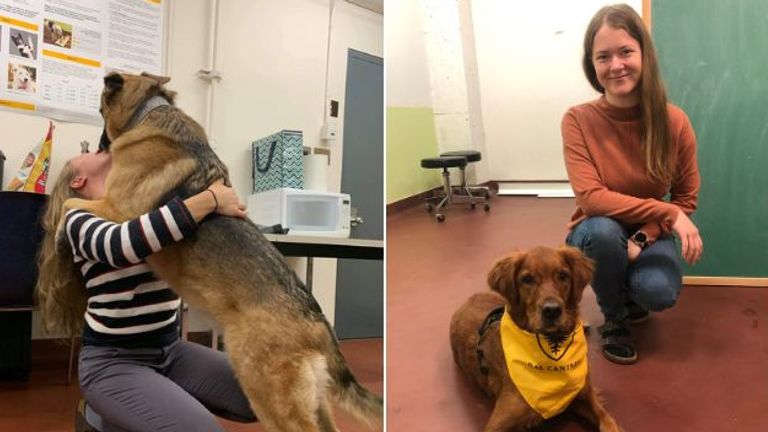Scientists have trained dogs to recognise the scent of post-traumatic stress disorder (PTSD) on people’s breath.
A study, published in the journal Frontiers in Allergy, found evidence that some dogs may be able to sniff out volatile organic compounds (VOCs) – which make up a human’s “scent profile”.
Certain VOCs are associated with stress, which a golden retriever named Ivy and a German shepherd named Callie both detected when put to the test.
PTSD is a mental health condition caused by stressful, frightening or distressing events, with those afflicted often reliving these moments through nightmares and flashbacks.
During the study, 26 people – more than half of whom met diagnostic requirements for PTSD – were asked to breathe into a face mask while recalling past traumatic events.
Out of 25 trained dogs, only Ivy and Callie were able to tell the difference between stressed and non-stressed face mask samples with up to 90% accuracy, according to the researchers.
“Both Ivy and Callie found this work inherently motivating,” Laura Kiiroja, of the department of psychology and neuroscience at Dalhousie University in Canada, said.
“Their limitless appetite for delicious treats was also an asset. In fact, it was much harder to convince them to take a break than to commence work.
“Callie in particular made sure there was no dilly-dallying.”
Previous research has shown that dogs can detect diseases such as cancer as well as early signs of potentially dangerous medical situations, such as an impending seizure or sudden hypoglycaemia, where blood sugar levels become abnormally low.
There are also some already trained to assist people during episodes of distress, but they only respond to behavioural or physical cues.
Ms Kiiroja said results from this study could make PTSD assistance dogs more effective.
Despite the high performance of the dogs, researchers said they seemed to have a slightly different idea of what they considered a “stressed breath sample”.
Ms Kiiroja said the team believes Ivy was more attuned to a part of the autonomic nervous system responsible for hormones associated with the “fight or flight” response, such as adrenaline.
While Callie was oriented towards a complex neuroendocrine system involved in the body’s response to stress, which is associated with the hormone cortisol.
She said their findings need to be validated by larger studies.









